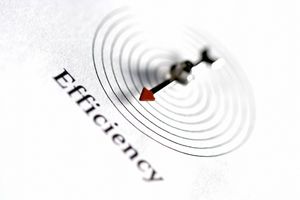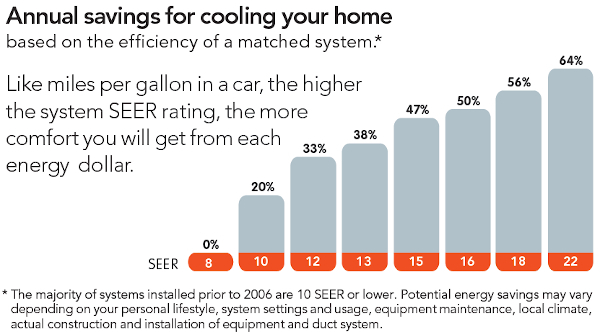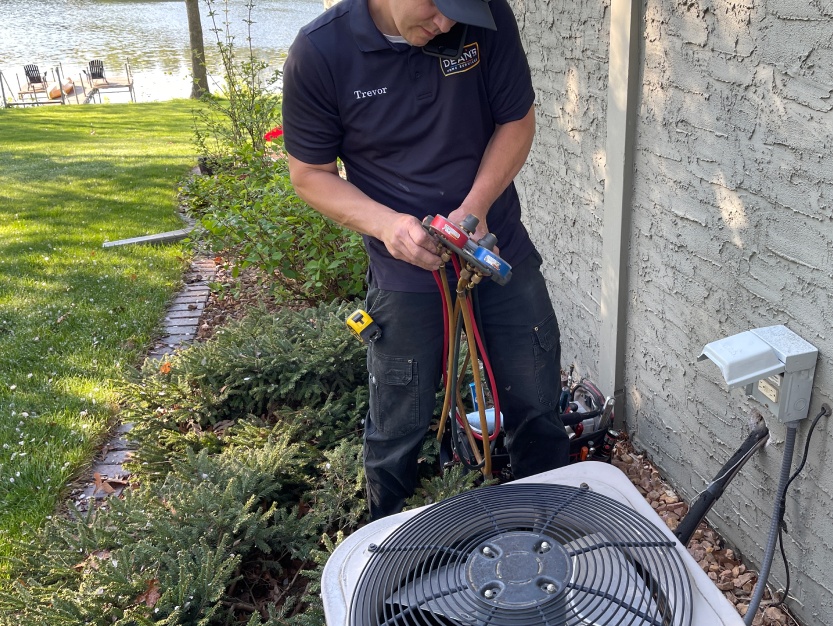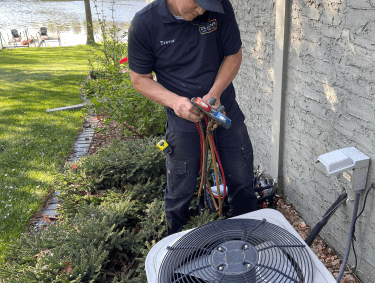SEER Rating – The AC Efficiency Rating Explained
Saving Money & Energy Efficient
You’re looking into purchasing a new AC unit and keep hearing the phrase “SEER Rating”. The Office of Energy Efficiency and Renewable Energy states that heating and cooling account for 55% of the energy used in residential homes. Energy prices aren’t getting any cheaper, therefore, maximizing efficiency is an excellent way to keep money in your pocket at the end of each month. Learn what that means, and how your SEER rating relates to buying a new furnace and air conditioner.

What is a SEER Rating?
All HVAC systems have SEER ratings which stand for Seasonal Energy Efficiency ratio. This ratio allows individuals to determine the efficiency of an AC system. The higher the final number is, the more efficient.
The average production of an air conditioning unit is measured in British Thermal Units or BTUs, and the average energy expended is measured in watts. The result will be a number from 6 to 23. The most popular systems boast a SEER of 20 or higher. A system with a SEER of 20 would use 1/20th of energy as one with a SEER of 10, even though they may have the same output. SEER ratings are only used to determine the energy efficiency of air conditioners and home heat pumps.
An HVAC unit that has a higher SEER is often due to two components that provide greater indoor comfort.
- 2-stage or variable-speed compressor
- Variable-speed blower

Differences Between Single-Stage and Two-Stage HVAC systems
Air conditioners with lower SEER ratings are usually single-stage and only run on one speed. This means they’ll frequently turn on and off during mild weather and you’ll experience uneven cooling or hot and cold spots. Y
You’ll also experience higher humidity levels which makes it feel hotter than it is. Your A/C needs to run for a long period of time to remove humidity from your home’s air. A single-stage system’s ups and downs don’t accommodate this, and it might require maintenance for them to run comfortably.
Price of a Two Stage HVAC system
It’s a trade-off, the higher the SEER rating now equals lower costing energy bills for years to come.
The SEER rating of an air conditioning unit is one of many features that have an effect on the price. Higher-performing units can be more costly than older units or units for each increase in SEER rating, expect to pay anywhere from $350 – $1500.

Minimum SEER Ratings For HVAC Units in Minnesota
Between extreme weather swings and Increases in energy cost, living in Minnesota, we know the importance of having an energy-efficient HVAC system to deal with the heat and the humidity. The Department of Energy determined in 2015 that starting in 2023, the SEER minimum in Minnesota should be 14 to keep up with both increased energy costs and warming trends.
Interested in options for a new energy-efficient Air Conditioner or Heat Pump for your home? Contact Dean’s Home Services to schedule a free home comfort consultation where an HVAC professional can review the options which make the most sense for you.







- Free annual evaluations
- 10% discount on repairs and equipment
- Priority scheduling
- No regular travel charges
- Discounted after-hours travel charges


